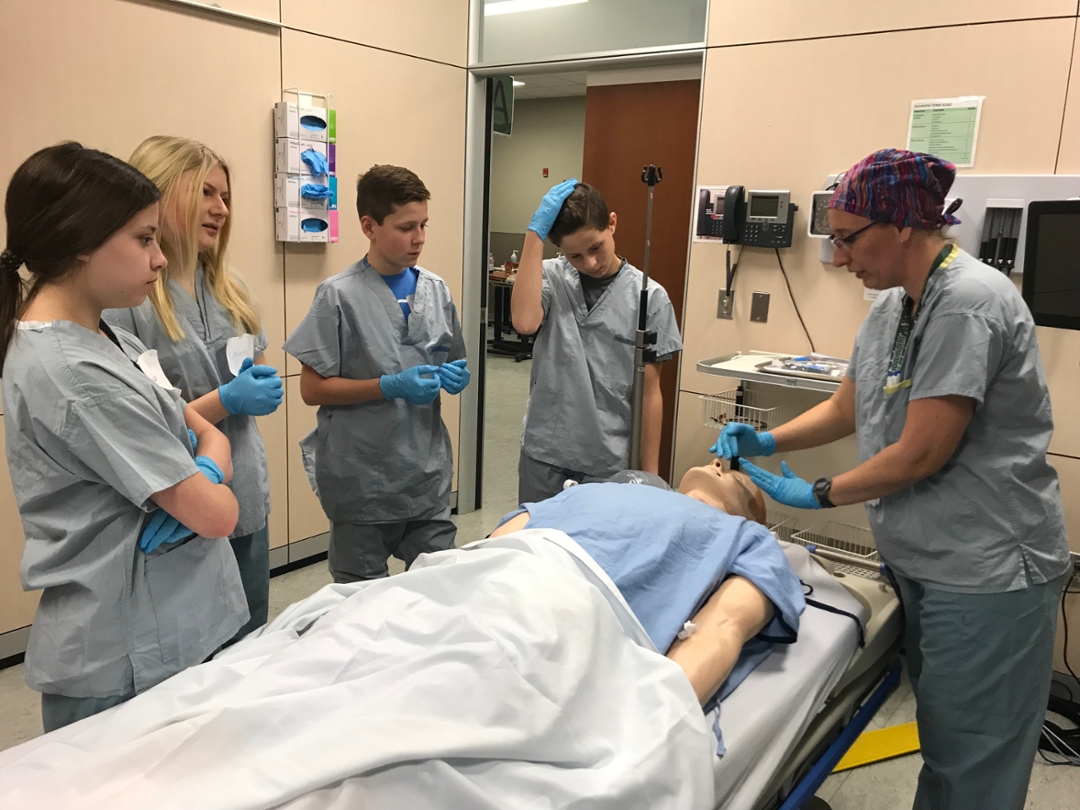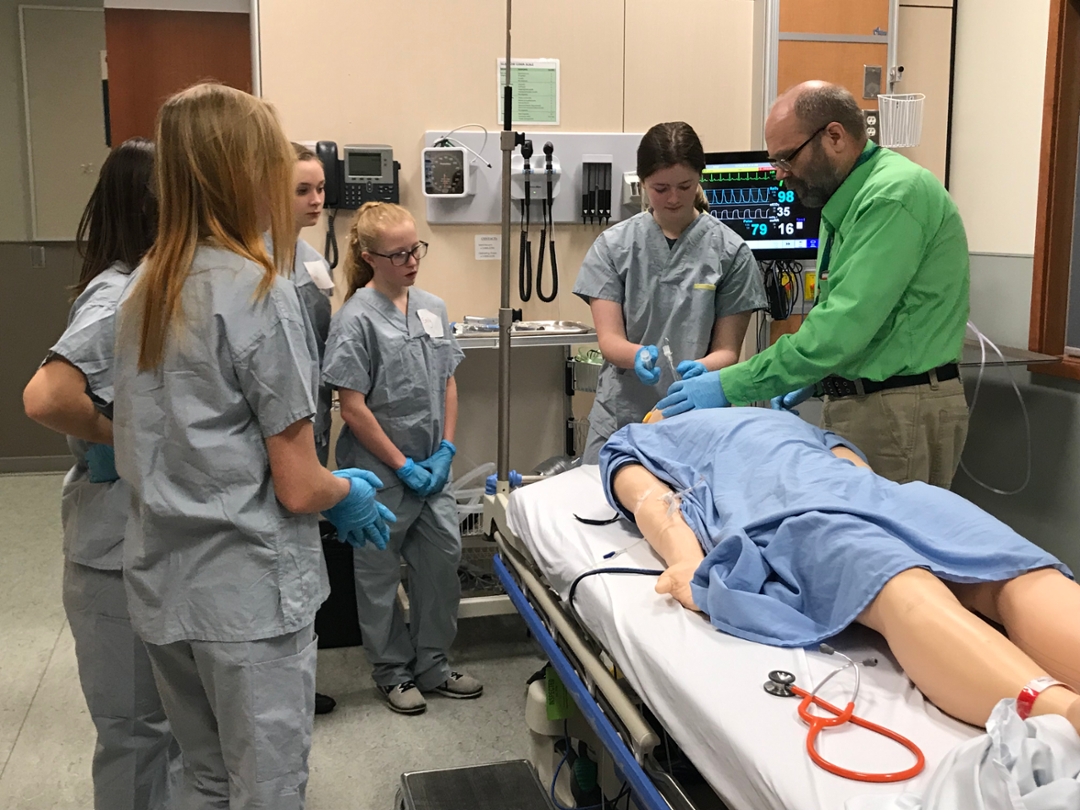
Students experience being doctors for a day
A group of Grade 9 students had the chance to experience what it was like to be a doctor during “Take Your Kids to Work Day” on Nov. 14.
By Kristen McEwenA mannequin’s face begins to turn blue as a handful of Grade 9 students gather around it to learn how to perform an endotracheal intubation.
The Department of Anesthesiology, Perioperative Medicine and Pain Management opened the doors of the Clinical Learning Resource Centre (CLRC) to students as part of “Take Your Kids to Work Day,” on Nov. 14.
Most of the 18 students in attendance have at least one parent who works in a health care profession. Unlike many of their peers, these students can’t experience their parents’ work directly.
It’s difficult for physicians and health care professionals due to patient confidentiality issues, said Dr. Mateen Raazi, provincial head of anesthesiology.
“Parents couldn’t actually take their children to places where they work because of restrictions,” Raazi explained. “(The kids) couldn’t have an authentic experience of what a physician actually does.”
Faculty members in the anesthesiology department came up with an innovative solution – using a learning tool already available to medical students.
Anesthesiologists Drs. Justina Koshinsky and Sean Coquet both work with residents in the high-fidelity simulation centre rooms. They also both have sons in Grade 9.
“In the fall, we were puzzling about what to do with our children … and a light bulb went off at one of our sessions,” Koshinsky said. “Well, why couldn’t we bring our children to this session and then they can at least get a taste of what we do in our daily life of clinical care.”
The high-fidelity simulation centre replicates clinical situations between patients and physicians that residents and post-grad trainees can use to practice approaching patients, asking questions and responding to patient answers.
The program uses computer software, microphones and mannequins to realistically create clinical situations, such as rising or falling blood pressure, to simulating a patient in labour.
Koshinsky noted that it was important to have children of medical professionals attend the day using the simulation programs. What these children often experience is seeing their tired parents, or having their parents miss events due to their jobs.
“They see the negative aspects, or the disheartening part of medicine,” she said. “They don’t get to see what we love doing, and those interactions with patients that are fulfilling, and the actual job and career which is so rewarding.”
This was the first time Raazi could bring his son, Ozayr, to find out firsthand what his work day is like.
“It’s really fun – I did not expect this,” Ozayr said. “I thought it was going to be walking around and doing other stuff but these simulations are really fun.”
“I didn’t even know they had these kind of rooms – I really enjoyed that,” he added.
Ozayr noted that while both of his parents are in medicine, the profession wasn’t something that interested him when he was young. However, he’s started to reconsider.
“I’m more into – maybe not the surgical side (of medicine) – more like the academic side, or research,” he said.
With an interest in math and sciences, including chemistry and physics, Ozayr is considering a career that combines those subjects with health care – such as biomedical engineering.
Koshinsky’s son, Sasha, found that the most interesting part of the day was when the group tried a surgery simulation on one of the mannequins.
“The residents were talking about what was actually going on and learning from that,” Sasha said. “It was fun because you got to pretend you were a doctor.”
Another student, Lauren, heard about the day through a friend whose mom is an anesthesiologist. Unable to go to work with her parents, Lauren jumped at the chance try a hands-on experience in medicine.
“It’s been really amazing," Lauren said. “I never would have thought this is something I would want to do.”
“I think I want to do something with medicine for sure,” she added.
In the future, the department plans to expand the use of the CLRC for “Take Your Kids to Work Day” to the rest of the university, and to members of the public who may be interested.
